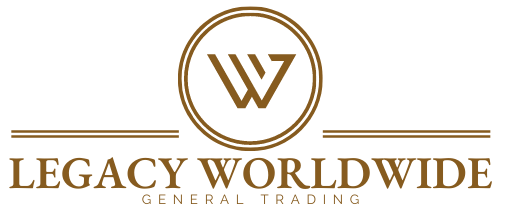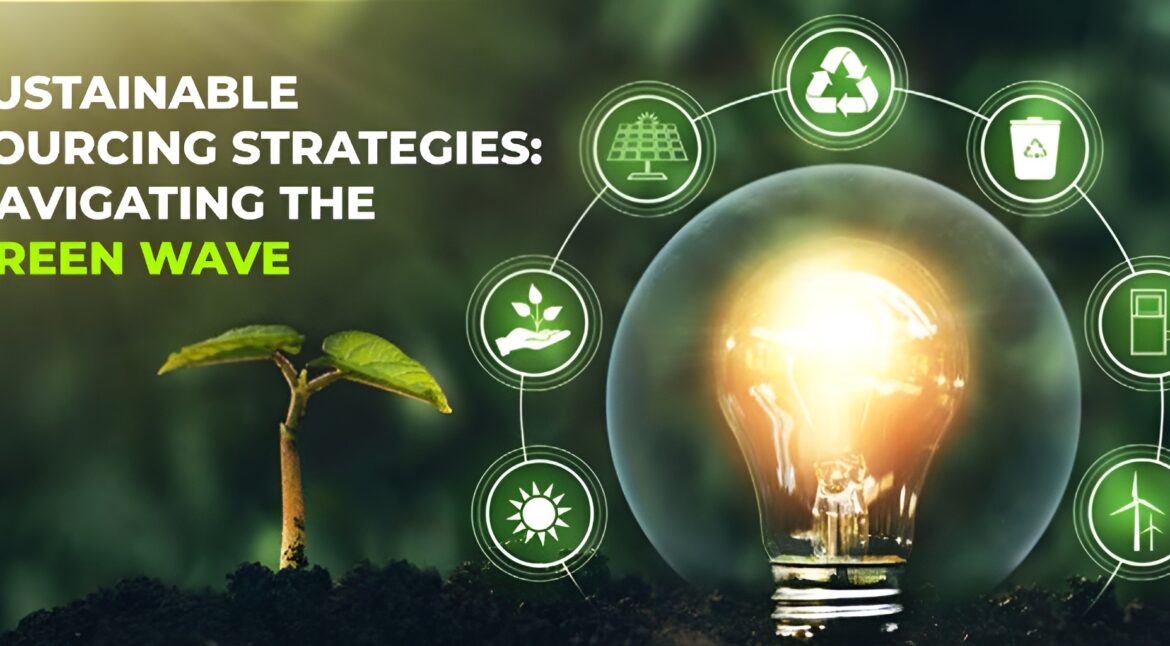Sustainable sourcing is no longer optional for businesses. It has become an integral component of modern supply chains. Companies now focus on balancing ethical values with environmental responsibilities. This transformation reflects the growing demand for accountability.
Today, customers are more conscious of the environment. Businesses find themselves under pressure to implement sustainable and green strategies. Sourcing goods sustainably helps them in gaining the confidence of their consumers.
This shift toward sustainability is crucial. B2B companies are now required to act responsibly. A 2023 survey by Specright revealed an important trend. It found that 74% of consumers prefer businesses that adopt sustainable practices.
What role can your business play in this green wave? Let’s discuss some essential strategies to help your company successfully implement sustainable sourcing.
What is Sustainable Sourcing?
Sustainable sourcing means procuring goods responsibly by prioritizing environmental conservation and social responsibility. This approach also supports economic stability. Businesses adopting this model create long-term value while safeguarding the planet. At the same time, it helps them maintain financial stability. In this way, corporations balance profit with ethical practices.
Key aspects of sustainable sourcing are:
- Environmental Care: Reduce pollution, waste, and the use of resources.
- Ethical Practices: Making suppliers follow fair labor rules and respect human rights.
- Economic Stability: Build long-term, fair relationships with suppliers.
Importance of Sustainable Sourcing
Sustainability in sourcing is no longer just ethical. Companies must now integrate sustainable practices to strengthen their brand reputation. Compliance with laws and long-term growth also depend on these practices.
1. Consumer Expectations
Today’s consumers care about transparency and responsibility in supply chains. Research from McKinsey shows a key trend. Businesses that focus on many sustainability factors grow faster. These include animal welfare, environmental impact, and eco-friendly packaging. These companies that prioritize sustainability grow twice as fast as those focusing on just one factor.
2. Regulatory Compliance
Governments are enforcing stricter sustainability laws worldwide. Authorities may fine or restrict businesses that break these rules. Businesses need to use sustainable sourcing to comply with the laws and lower legal risks.
3. Low Supply Chain Risks
The use of unethical practices can negatively impact a company’s reputation. Customers also lose trust when they realize that a firm is using policies that damage the environment. Sustainable sourcing encourages accountability and transparency. This lowers the chance of these problems happening.
4. Long-Term Cost Savings
Many companies save money by adopting energy conservation practices and recycling materials. Sustainable sourcing goes beyond being the right thing to do. It helps businesses stay strong, flexible, and grow over time. In a fast-changing global market, this approach helps businesses succeed.
Core Principles of Sustainable Sourcing
Sustainable sourcing is built on key principles. These include responsible procurement and environmental care. Ethical labor practices and financial stability are equally important. Together, these principles ensure a balanced approach to sourcing.
The core focus is on protecting the environment and being socially responsible. Adhering to these principles helps businesses create lasting value.
Favorable Ethical Sourcing Practices
Ethical sourcing is the foundation of sustainable supply chains. It ensures that goods and materials are produced responsibly. This means respecting workers’ rights, ensuring fair labor standards, stopping exploitation, and much more.
Key Elements of Ethical Sourcing:
- Fair Labor Practices: Partner with suppliers who comply with international labor laws and provide safe working conditions for their employees.
- Avoiding Forced or Child Labor: Conduct regular supplier assessments and audits to eliminate unethical practices.
- Fair Wages and Benefits: Collaborate with suppliers who ensure fair wages and provide adequate benefits to their workers.
- Cultural Sensitivity and Community Impact: Support local cultures by making procurement decisions that uplift local communities.
Why Ethical Sourcing Matters:
- It helps protect a company’s reputation by avoiding links to unethical practices.
- Builds stronger relationships with suppliers through trust and responsibility.
- Compliance with global standards and legal requirements. As a result, it greatly minimizes the risk of facing legal challenges.
How to Lower Environmental Impact in the Supply Chain?
Lowering negative environmental effects is one of the primary goals of sustainable sourcing. It entails choosing environment-friendly goods, cutting emissions, and using resources as efficiently as possible. These steps aid in the creation of supply chains that are more ethical.
Strategies to Reduce Environmental Impact
- Improve Transportation: Use efficient logistics to save fuel and reduce carbon emissions. For example, DHL is using electric vehicles to cut down emissions. The logistics giant has also implemented smart routing algorithms to make the delivery process more fuel-efficient.
- Adopt Renewable Energy: Push suppliers to convert their output to renewable energy sources. For instance, Tesla’s Solar Roofs offer an affordable means to supply sustainable energy to buildings.
- Minimise Waste: Sustainable sourcing requires embracing the concepts of the circular economy. Closed-loop recycling systems can help businesses cut waste.
- Eco-Friendly Packaging: Choose reusable or biodegradable packaging materials. By 2025, Nestlé plans to have all of its packaging entirely reusable. Such initiatives show how eco-friendly packaging assists in achieving sustainability objectives.
Real-World Impact:
A McKinsey report highlights an important point. Companies that focus on decarbonizing logistics see significant progress. This helps them move closer to net-zero targets. Let’s take an example of Unilever. The multinational FMCG has integrated renewable energy into its supply chain operations. Consequently, it has achieved carbon neutrality in several of its production facilities.
Build Long-Term Relationships with Green Suppliers
Strong collaborations are vital for sustainable sourcing. These long-term alliances are established with suppliers who have common goals. These relationships build trust, stability, and help both parties grow.
Steps to Build Strong Supplier Partnerships:
- Supplier Assessments: Regularly check how suppliers handle environmental and social practices.
- Collaborate on Goals: Work with suppliers to reach sustainability targets.
- Incentivize Green Practices: Offer rewards for suppliers that use eco-friendly methods.
- Transparent Communication: Keep communication open to solve problems and track progress.
Benefits of Sustainable Sourcing for Businesses
After discussing the fundamentals of sustainable sourcing, let’s look at how these methods help companies. Sustainable procurement can boost growth, improve brand perception, and ensure long-term success in addition to achieving ethical and environmental goals.
Boost Your Brand’s Image With Sustainability
Customers favour companies who put sustainability first. According to a recent study, 44% of consumers favour businesses that use sustainable methods.
There are multiple benefits of integrating sustainable sourcing into operations. It boosts brand loyalty and helps companies in meeting customer expectations. Sustainability in sourcing also draws in more clients who respect ethical conduct.
Achieve Cost Efficiency Through Green Strategies
Sustainable sourcing can save businesses significant money. For instance, Unilever saved $1.5 billion through sustainable sourcing since 2008. Green strategies also make businesses operate more efficiently.
More and more businesses now realize that sustainability is an important factor that can help save considerable costs. Keeping this in mind, the sourcing process is being continuously refined.
Compliance with Global Sustainability Standards
Acknowledging international environmental regulations is essential. A survey shows that 51% of multinational corporations implement sustainable buying practices. These procedures make their supply chain network more robust.
Aligning with these standards offers several benefits. Businesses can avoid legal issues and improve their market position.
Role of Tech in Sustainable Sourcing
Technology is reshaping sustainable sourcing. AI and blockchain are transforming decision-making. IoT ensures real-time monitoring of supply chains. These innovations boost transparency and efficiency across operations. Let’s explore how specific technologies support these goals.
Use of AI and Data Analytics
Data analytics and artificial intelligence (AI) are being adopted by businesses to streamline their supply chain operations. They make it possible to source goods more effectively and intelligently. Additionally, the technology encourages environment-friendly shopping habits. Large volumes of data are processed by AI to find patterns and forecast trends.
A McKinsey report highlights the advantages of AI in procurement. It shows that AI can reduce costs and improve decision-making. By leveraging AI and data analytics, B2B companies can improve efficiency of the operations. This helps cut expenses and achieve sustainability goals through data-driven insights.
Blockchain for Transparency in Sourcing
Blockchain technology offers a secure, decentralized ledger system. It makes the supply chain management transparent and traceable. With the use of technology, we can not only avert risks but also promote ethical practices.
Forbes points out that blockchain improves supply chain transparency. It lets businesses track products in real-time, from origin to consumer. Using blockchain in sourcing builds trust with everyone involved.
IoT for Real-Time Supply Chain Monitoring
The Internet of Things (IoT) connects sensors and devices in the supply chain. Businesses can track goods and materials in real-time using IoT devices. You can monitor inventory, check conditions, and fix problems quickly.
Supply Chain Digital points out the benefits of IoT. It helps track items in real-time and improves visibility of inventory. This reduces losses and increases efficiency. Using IoT technologies also supports sustainable sourcing. By using it, we can cut down on waste and improve supply chain visibility.
How to Overcome Challenges in Sustainable Sourcing?
Sustainable sourcing is a must for contemporary businesses. However, it might be challenging to stay up to date with sustainable practices. The decision makers need an innovative strategy to deal with these types of problems. Let’s explore these problems and potential solutions.
Manage Costs with Green Initiatives
In an apparent sense, it will seem expensive to adopt sustainable practices. Indeed, renewable energy or materials involve some considerable investment at the initial stage. Yet these may end up saving money over a long period.
Energy-effective production will reduce overall expenses in the longer term. The World Economic Forum says green technologies can save companies up to 15% on operating costs.
Businesses can lower expenses by making changes step by step. They should start with areas that give the best returns. Government incentives for green projects can also help reduce costs.
Supplier Adherence to Sustainability Goals
Following the sustainability goals is vital for suppliers. The ones who don’t comply can cause problems. They can prevent a company from building an ethical supply chain.Regular checks and clear communication help make sure suppliers meet sustainability standards. A recent Deloitte study found that 67% of people would pay up to 41% more for sustainable products. Younger people showed an even stronger preference for these products.
Therefore, building strong partnerships with suppliers is important. Suppliers who share sustainability values help everyone follow the rules. Providing training can also help suppliers meet sustainability goals.
Tackle Global Supply Chain Complexities
Global supply chains involve many different people and rules. They also face challenges with logistics. Coordinating sustainability efforts across regions can be difficult. A KPMG report shows how AI and blockchain are improving supply chains globally. These technologies help us respond quickly to multiple requests and keep track of issues that could potentially impact the end-user’s experience.
Conclusion
Sustainable sourcing is about safeguarding your company’s future, in addition to preserving the environment. Businesses can generate long-term benefits and outperform rivals in an evolving marketplace by reducing environmental damage and implementing ethical supply chains.
Discover new technologies in AI, blockchain, and IoT that will grant unparalleled supply chain transparency and efficiency. Forge deep relationships with suppliers just as committed to a greener future. Ensure practices are ethical to meet consumers’ expectations and global sustainability standards.
For setting up your company for long-term success, take these actions now. Participate in the shift that is fueling a movement to improve the world, one responsible decision at a time.
At Legacy Worldwide, we understand that businesses face obstacles in trying to achieve sustainable sourcing; that’s where we come in. We help organizations understand and keep up with the most updated trends and technologies. Our focus is on building efficient, ethical, and environmentally responsible supply chains.
Sources
- Consumers Prioritize Purchasing Sustainable Products and Desire Greater Transparency from Companies on Sustainability Progress (Specright)
- Consumers are in fact buying sustainable goods: Highlights from new research (McKinsey & Company)
- Decarbonizing logistics: Charting the path ahead (McKinsey & Company)
- Conscious Consumer Statistics (Capital One Shopping Research)
- Unilever finds short-term sustainability costs lead to long-term savings (Supply Chain Dive)
- Sustainable Procurement Statistics — 50 Key Figures of 2024 (Procurement Tactics)
- Revolutionizing procurement: Leveraging data and AI for strategic advantage (McKinsey & Company)
- Track And Trace: Blockchain’s Supply Chain Superpower (Forbes)
- Top 10: Uses of IoT in Supply Chains (Supply Chain Digital)
- Unearthing opportunity: Why the time is now to invest in mining technologies for sustainable growth (World Economic Forum)
- Sustainability in business: Staying ahead of the curve (Deloitte Insights)
- How AI, Blockchain and Emerging Technologies are transforming supply chain performance (KPMG)










